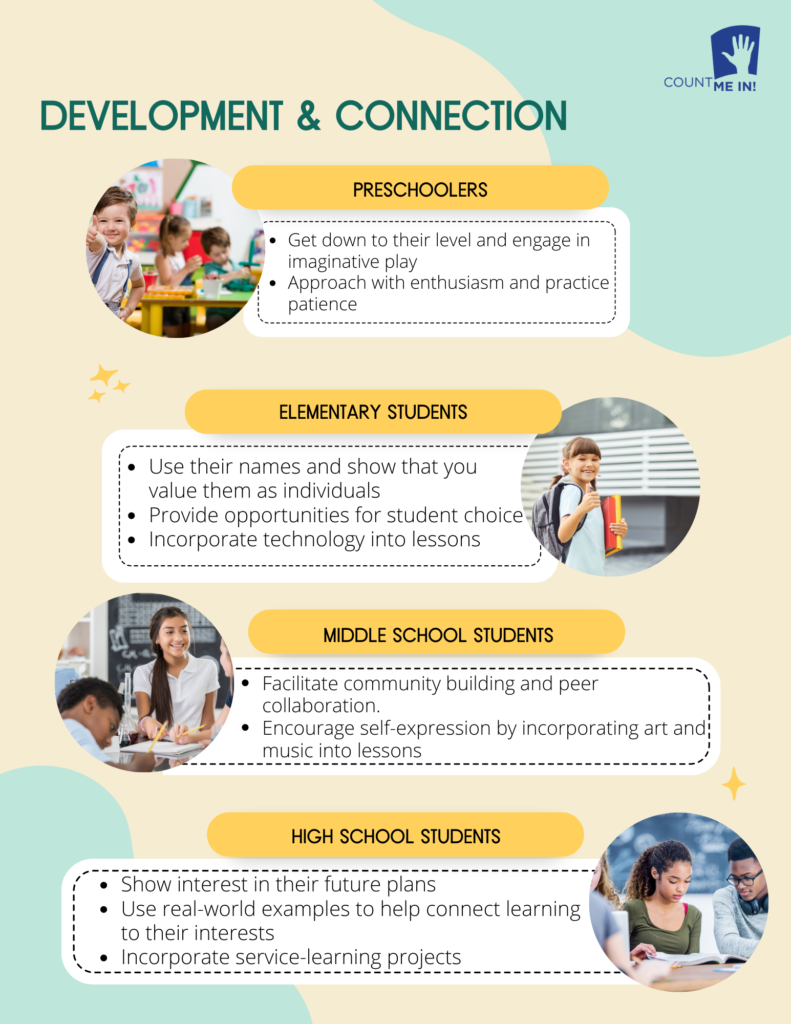Creating strong connections with students is crucial for building a positive learning environment and academic success. Different age groups require different strategies. Younger students benefit from opportunities to play and build independence. Middle schoolers require authenticity and opportunities for self-expression. With high school students, educators should support future goal setting and use real-world examples.
Here are some specific examples and anecdotes for each age span:
Preschoolers: Play & Imagine
Connecting with preschoolers requires patience, enthusiasm, and a willingness to engage in imaginative play. Getting down to their eye level when communicating with them is an effective strategy that shows that you respect and value them as individuals. Preschoolers learn best through play; participating with them in imaginative play allows educators to bond with preschoolers and understand their interests. For example, a teacher might join in a game of dress-up or pretend to be a customer in a play grocery store. Learn more by reading The Power of Play from Scholastic.
Elementary Students: Independence & Choice
Elementary students are curious about the world around them and are developing their independence. One effective strategy is to learn their names and use them often. Addressing students by name shows that you value them as individuals. Providing opportunities for student choice is also an effective strategy. Allowing elementary students to make choices about their learning fosters a sense of independence and empowerment. For example, a teacher might give students a choice between two books to read for a reading assignment. This blog post from Cult of Pedagogy about Student Motivation provides ideas for incorporating student choice into the elementary classroom.
Middle Schoolers: Honesty & Self-Expression
Connecting with middle schoolers requires understanding their growing sense of independence and desire for autonomy. One effective strategy is to be authentic and honest when communicating with them. Middle school students are developing a sense of self and often can detect insincerity. Providing opportunities for self-expression is another effective strategy. Middle school students are developing their identities and interests, so providing opportunities for self-expression, such as art projects or creative writing assignments, can help build connections and engagement. For example, a teacher might assign a creative writing assignment that allows students to express their thoughts and emotions about a topic. Learn more about integrating the arts into your classroom.
High School Students: Real World Exploration
High school students are preparing for college and beyond, and educators need to provide support and guidance as they navigate this important time in their lives. Showing interest in their future plans is one effective strategy for connecting and fostering academic success as they think about their future aspirations. Another strategy for building relationship and engagement is using real-world examples that are relevant to them. The Maine DOE ELO web page lists a variety of resources and contacts for incorporating career exploration and service learning into your classrooms.

